The kittiwake season has ended. The last of the GPSA Global Positioning System (GPS) is a satellite-based navigation system used to track the location or position of objects on the Earth’s surface. units was collected today, tracks were recorded and the winter data loggers have been left attached to their legs. The devices will record the travels of these gulls as they flap their way through the frigid months of the northern winter. For the team, it's time to change gears and to switch to the other species of interest in the telemetry study, the Thick-billed Murre!
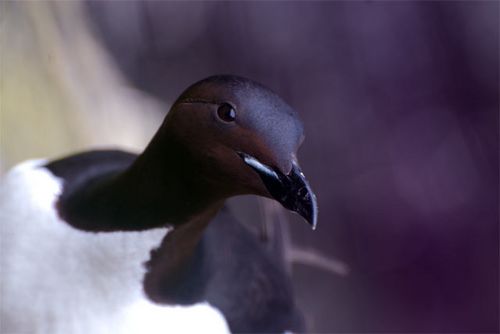
We're getting ready to attach data loggers, GPSA Global Positioning System (GPS) is a satellite-based navigation system used to track the location or position of objects on the Earth’s surface. units, observe the birds at the nesting site to try to identify the fish species that they are providing to their chicks. But first, we had to shoot them. Here was the assignment, the team wanted to be able to identify individual murres and record their time at sea and the time spent attending their chicks. A standard practice is to color mark the birds to be able to easily recognize the individuals at each nest. So, armed with non-toxic dyes, spray bottles, an extendable noose pole and a SuperSoaker, John Warzybok and I headed out to the murre colony to see what kind of mischief we could get into with this equipment.

Murres nest high up on the cliff faces and for our research, need to be accessed from above, rather than from down on the beach like the kittiwakes. Our plan was to see if we put the green or pink dye onto the birds and take note of the parts of the birds that had been marked. Our purpose in all of this was to be able to distinguish those birds with chicks from their mates and their look-a-like neighbors.
These seabirds nest very close together on the narrow ledges. When a bird comes flying in from the Bering Sea with a fish to feed its chick, the scene can grow somewhat chaotic. Birds are jostling for position, trying to steal the fish from the new arrival, protecting their own chick from the ensuing melee, all on that little volcanic shelf that they all call home. If one of the pair is clearly marked, it makes it a lot easier for us to figure out which murre matches with which mate and also with which chick.
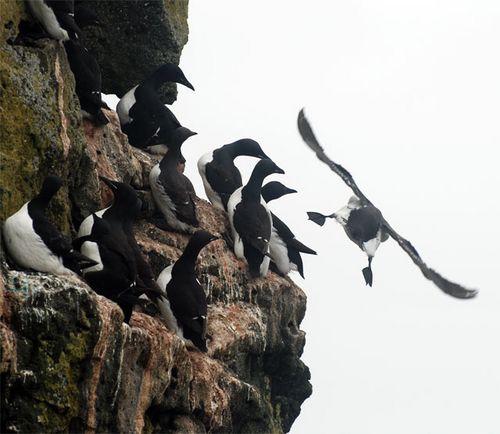
Our first try was with a standard squirt bottle equipped with a "high powered" nozzle. No good. It didn't even come close to the birds, instead turning into a fine green mist as soon as it got about a meter out of the bottle. Our next choice (of course) was the SuperSoaker. Definitely worked better (and certainly more fun), we managed to pepper several murres with splotches of green that would make them recognizable.
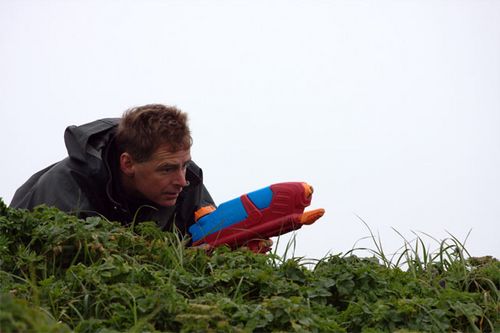
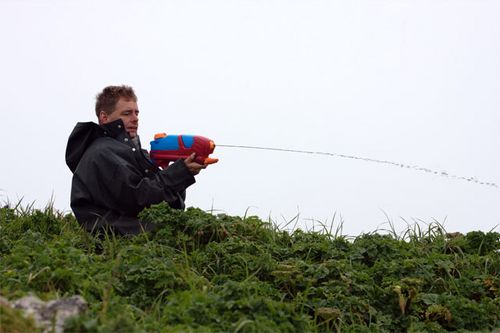

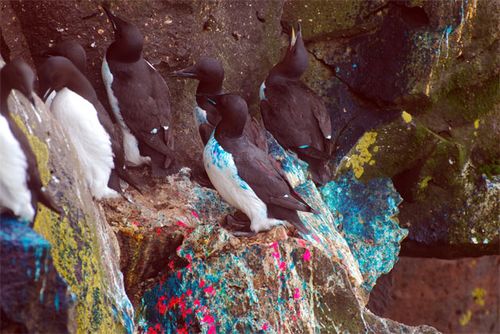
Actually a rather low tech method that allowed for more of an effective surgical strike, was to use a small plastic jar with a hole punched in the top that we taped to the end of the noose pole. The jar was filled with a hot pink fluorescent dye that would stand out against the natural black and white coloring of the Thick-billed Murre. The jar was carefully lowered down to a point just above the targeted bird, the jar was tipped over and the dye would drip...drip...drip onto the bird standing below.
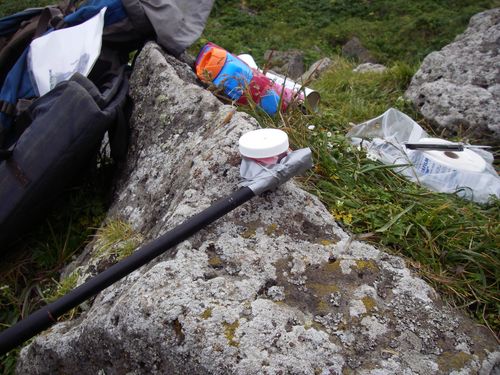
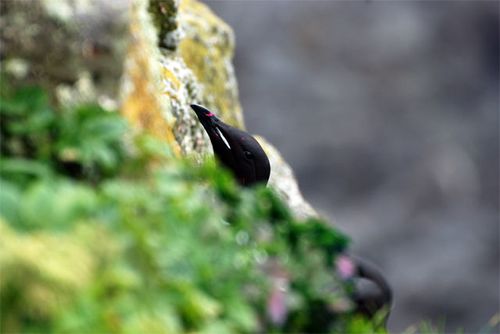
We managed to mark about a dozen birds that we ought to be able to easily recognize over the next couple of weeks. I will keep you posted on their growth and development as the season progresses. Painting murres was a lot of fun! photo 8 Bird Species seen: Red-faced Cormorant, Harlequin Duck, Parakeet Auklet, Least Auklet, Tufted Puffin, Horned Puffin, Thick-billed Murre, Common Murre, Northern Fulmar, Wandering Tattler, Rock Sandpiper, Ruddy Turnstone, Black-legged Kittiwake, Red-legged Kittiwake, Glaucous-winged Gull, Lapland Longspur, Gray-crowned Rosy Finch. Mammals: Arctic Fox, Northern Fur Seal, Reindeer!


Comments